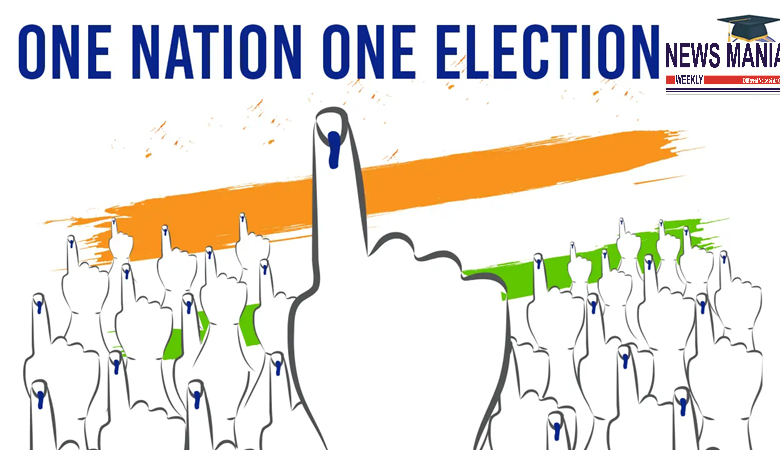Debate over ‘One nation , One election’ continues

News Mania Desk/ Piyal Chatterjee / 19th September 2024
The Union administration led by Prime Minister Narendra Modi adopted the “One Nation, One Election” plan on Wednesday, coordinating elections for the state legislatures and the Lok Sabha.
The Union Cabinet endorsed the high-level committee’s recommendation, which advocated for simultaneous polling and was led by former president Ram Nath Kovind.
The committee has suggested holding simultaneous elections in two stages: simultaneous elections for the state and Lok Sabha assemblies should be held in the first phase, and local body elections should be synchronized within a 100-day window in the second phase.
The Kovind panel has suggested modifying the final five articles of the Constitution to allow for nationwide elections to be held simultaneously. This includes modifications to Article 172, which addresses the duration of state assemblies, and Article 83, which specifies the Lok Sabha’s term of office.
It is probable that at the next winter session of Parliament, bills to this effect will be introduced. 62 political parties were asked for their opinions by the Kovind panel. In total, opinions from 47 political parties were presented. Of these, 32 were in favor of it and 15 were against it, per an Indian Express story. The 32 parties who backed the measure were either friendly parties or partners of the Bhartiya Janata Party (BJP) in the National Democratic Alliance (NDA).
Telugu Desam Party, an NDA ally that did not provide the panel with an opinion, has stated that it supports the move in theory.Additionally, five of the fifteen parties opposed to simultaneous polling are opposition parties that do not belong to the NDA and are in power in several states, including the Congress.Unlike its two previous administrations, the BJP does not hold a majority in the Lok Sabha. To get the laws enacted, it will rely on friendly parties and its NDA allies.
The political parties endorsing the “One Nation, One Election” concept have 271 members in the lower house of the Lok Sabha, with 240 of them belonging to the Bharatiya Janata Party. In the Lok Sabha, this is just one vote short of a 271 simple majority.
205 Lok Sabha MPs are represented by the 15 parties that objected to simultaneous polling while voicing their concerns to the commission. 203 MPs from the opposing INDIA group were among them. There are 234 Lok Sabha MPs who are part of the INDIA bloc and the parties that did not present their opinions to the panel.With 293 MPs in the Lok Sabha, the NDA is joined by the TDP and other parties that have so far remained impartial throughout the simultaneous polls.
To get the measures enacted, however, the Modi government will require 362 votes (MPs), or a two-thirds majority, in the Lok Sabha if there are 543 members.Although the Modi government has a stronger position in the Rajya Sabha, there are insufficient votes to enact the laws.
There are 115 MPs from the BJP-led NDA in the Rajya Sabha. The NDA now has 121 MPs in the Upper House after the addition of six nominated members. In the Rajya Sabha, the INDIA group has 85 MPs.The Rajya Sabha has 250 members; if every one of them is present for the vote, 125 MPs would constitute the simple majority and 164 MPs the two-third majority. There are 234 MPs in the Rajya Sabha at the moment.
Given his circumstances, it is obvious that the Modi administration will find it difficult to adopt the legislation necessary to carry out the “One Nation, One Election” idea during the next Parliamentary sessions.






